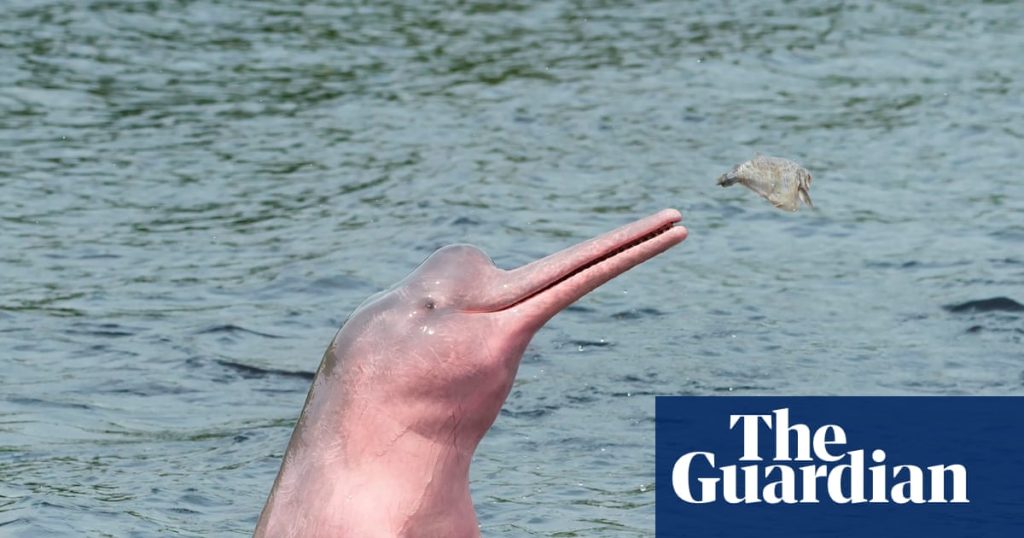Amazonian lakes are being transformed into simmering basins hotter than spa baths as severe heatwaves and drought grip the region, research shows.
The temperature of one lake exceeded 40C (104F) as water levels plummeted under intense sunlight and cloudless skies. The extreme heat triggered mass die-offs among endangered Amazon river dolphins and fish, which cannot survive in such high temperatures.
The shallow waters of Lake Tefé, which were only two metres deep, reached 41C – warmer than an average spa bath. “We couldn’t even put our fingers in the water. It was really hot, not just in the top bit, but right down to the bottom,” said the lead researcher, Ayan Fleischmann, from the Mamirauá Institute for Sustainable Development. “You put your finger in and remove it instantaneously, it’s unbearable.”
Floating carcasses of up to 200 river dolphins washed up over a six-week period around September 2023. No one in the region had seen this happen over the past century, said Fleischmann. “It was completely surreal and really scary.”
This incident led them to look at other water bodies across the Amazon region. Half of the 10 lakes investigated experienced exceptionally high daytime water temperatures above 37C, according to the study, published in the journal Science.
Researchers analysed water temperatures from central Amazonian lakes during the drought of 2023, which was followed by another extreme drought late last year, with new record-breaking low-water levels and severe heating of the lakes. On average Lake Tefé reaches 30C in the hottest months, but in 2024, it hit 40C.
Amazon lakes have been warming by 0.3 to 0.8C each decade over the past 30 or so years – rates higher than the global average, researchers found. At the same time, they are shrinking. During the 2024 drought Lake Tefé lost about 75% of its surface area and Lake Badajós shrank by 90%.
Adrian Barnett, senior lecturer in behavioural ecology at the University of Greenwich, who was not involved in the research, said: “The paper shows the extraordinary impacts climate change is having, even on such huge ecosystems as the Amazon, and that these are not restricted to the forests, but the aquatic realm as well.”
“A 10C increase in water temperature is unparalleled,” he said. “The volume of energy needed to achieve this in such huge volumes of water is jaw-dropping.”
Most fish, and the dolphins and manatees, normally breed in the low-water season, said Barnett said, adding that it was likely that 2023 would have been a disastrous year reproductively for most species. “If this happens repeatedly, then their populations and those of the species that are connected to them ecologically, will decline severely.”
There are few local solutions to this problem, according to Barnett. “Something that’s happening at such a huge scale really requires a systems approach and that means attacking the root cause of the problem, which is fossil fuel emissions and the causes of global warming itself,” he said.
Find more age of extinction coverage here, and follow the biodiversity reporters Phoebe Weston and Patrick Greenfield in the Guardian app for more nature coverage

